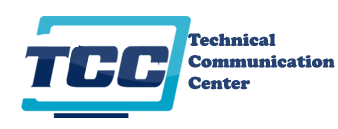Technical Writing
Technical Writing for a Help Desk
An informative video by a professional Documentation Specialist. A lot of practical pointers here provided by someone who actually practices what she preaches. Have pen and paper ready and take notes.
Read MoreDocumentation as a Backup for UI Deficiencies?
Here is a view that has some weight to it, on the basis of my personal experience as a Fortune 500 technical communicator: “[Software] Documentation is rapidly becoming a backup for deficiencies in the user interface and user training rather than a complete solution in itself.” And here is an intelligent blog post that discusses…
Read MoreThe Importance of Writing Perfect Checklists
Ask yourself: would you be willing to fly in an airplane flown by a pilot who relies on his or her “memory and track record” rather than a detailed and time-tested checklist? I wouldn’t. The deeper question is: if checklists are perfect and indispensable for flying airplanes safely and reliably, then why don’t we use…
Read MoreHow to Become a Technical Writer
(A personal account published at Tom Johnson’s excellent blog) by Sarah Pruitt Deciding to become a technical writer was easy. But finding the experience and the time has proven unforgiving. My job is not based on writing; in fact, writing is rarely needed. Between working full-time at a bank doing account maintenance (which is equivalent…
Read MoreHow to Write a Technical Reference Manual as a Team
What are the things you should keep in mind if you’re working as a part of a writing team authoring a reference manual? Or what are the things you should keep in mind if you are managing such a team of technical writers? Here is a good blog post by Lesley Hays, an Aussie technical…
Read MoreTechnical Writing – What is DITA?
© Ugur Akinci DITA is an acronym which stands for Darwin Information Typing Architecture. It is a method of technical writing and publishing based on XML (Extensible Markup Language). Just like the web language HTML is based on tags like <title>, <p>, etc. XML is also based on tags some of which it shares with…
Read MoreTransparency and Clarity: Hallmark of Modern Technical Communication
Transparency and clarity are two of the most important characteristics of modern technical communication. Most such communication is directed at end users and consumers who are more than ever demanding transparency and clarity in the information products that they consume. Disclosures of every kind are now a regular part of almost all forms of technical…
Read MoreHow to Use Twitter to Promote Your Writing Services
© 2009 Ugur Akinci There is a good way to use the Twitter to promote your writing services, and another way that’s not that good. I’m finding these things out myself by trial and error and I wanted to share some of my findings with you. 1) Always share something useful and relevant, either by…
Read MoreWriters: Searching Through the Job Ads is not Marketing
© Ugur Akinci Generally speaking, we writers are not good at marketing our services. We love what we do and yet expect to be “discovered” and paid well for it too. Think again. This blog entry was prompted by an email from an obviously-very-qualified reader who asked whether she needs to get a technical writing…
Read MoreDifferences Between Different Guides
Introduction Some of my readers asked the differences between three types of technical documents used frequently in the software-hardware sector: User Guide, Startup Guide, and Quick Reference Guide. Sometimes the demarcation line gets blurred, especially if you’re new in the business. User Guide A USER GUIDE is the easiest to define: it’s the “bible” of…
Read More